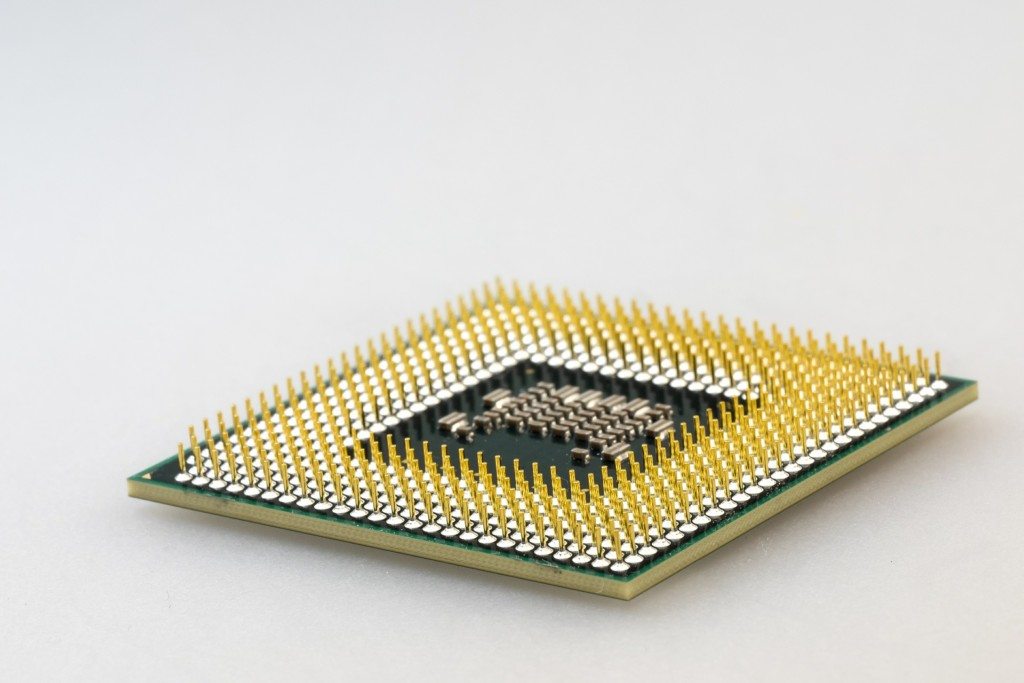That Silicon Valley loves anything new is clear in everything from the IT industry’s vigorous promotion of emerging trends and products to its enthusiastic drumbeating for sometimes vaporous start-ups. The value of this Super Lotto culture is seldom questioned, especially by the VCs and others riding the gravy train.
However, it’s a mistake to confuse the Valley’s self-mythologizing Horatio Alger tales with the parable of David and Goliath; that feisty innovators can take on muscular opponents and, despite the odds, score remarkable wins.
How true is this? Not as much as you might think, and with results that often conveniently forget or ignore original assumptions.
Consider Linux. When the OS first began accelerating commercially in the late 1990s, many supporters believed it could eventually replace pervasive Windows PC solutions. That was despite Microsoft holding a massively dominant market leadership position that generated billions in annual revenues and profits.
You know the rest of the story. Rather than disturbing, let alone displacing Windows desktops, Linux instead disrupted data center markets and established, proprietary server operating environments. Two decades later, Microsoft Windows still owns 90 percent+ of the PC market while Linux’s is in low single digits.
Similar examples are easy to cite, so if you sense an elemental truth here, don’t be surprised: Either established IT vendors are harder to kill than many assume or they are better at adapting to changing circumstances than many believe. Both of those points are at least partly correct, but they’re good to keep in mind when parsing recent press stories about supposedly serious troubles for Intel.
Qualcomm Snapdragon and Windows 10
Like what? First, the late-May announcement by Qualcomm that ASUS, HP and Lenovo would ship Windows 10 PCs using the company’s ARM-based Snapdragon 835 processors later this year. Second was Advanced Micro Devices’ (AMD) new data center-focused EPYC microprocessors.
The ARM ecosystem and Microsoft have played house before. At CES 2011, then-CEO Steve Ballmer announced that the company would support ARM-based silicon and products with a solution: Windows RT. After some initial enthusiasm and a handful of products (including Microsoft’s original Surface tablet), customers and Microsoft OEMs walked away and Windows RT retired in 2015.
Though it wasn’t RT’s only problem, probably the biggest was its inability to support existing Windows-based applications. That was no surprise since software has to be substantially rewritten to support new platforms. But it ticked-off customers who reportedly returned Surface tablets and other rt devices in record numbers. Qualcomm says it will avoid pesky compatibility issues with software emulation which should (in theory) enable OEM partners to deliver solutions that successfully support Windows 10 applications.
AMD EPYC
How about AMD? Announced on June 20th, the new EPYC processors are based on the same Zen architecture as the company’s Ryzen PC processors. EPYC chips include four silicon dies supporting up to eight cores, each of which can run one or two hardware threads. Each EPYC package can support up to 2TB of DDR4 RAM over eight channels, and has 128 PCIe lanes.
According to AMD, EPYC is an alternative for applications where one- and two-socket Intel Xeon currently reigns supreme, including cloud computing. In fact, the company’s launch included assists from two formidable cloud service providers (CSPs) – Microsoft Azure and Baidu – as well as server OEM/ODM players, including Asus, Dell, HPE, Gigabyte, Inventec, Lenovo, Sugon, Supermicro, Tyan and Wistron.
EPYC isn’t AMD’s first data center rodeo. In 2003, the company launched its Opteron processors to compete against Intel Xeon and garnered significant interest by being first to market with 64-bit compatible x86 server silicon which Intel reserved for its Itanium technologies. That and other features resulted in quick uptake of Opteron-based systems by data center customers, eventually allowing AMD to capture around a quarter of the server market by 2006.
Then things went to hell due to poor quality control, faltering sales and leadership squabbles. AMD’s progress ground to a halt, giving Intel the time it needed to catch-up. That came first with porting 64-bit extensions to the Xeon line, then pushing ahead with its robust, power-efficient Core architecture. Today, AMD’s server market share stands at something under 2 percent.
Final analysis
So how troublesome are these new initiatives to Intel? Moreover, what can the company do to counter them?
In an apparent response to Qualcomm’s announcement, Intel’s EVP and general counsel Steven Rodgers, and Richard Uhlig, an Intel Fellow and director of Systems and Software Research, posted a blog on the company’s advancements of its x86 ISA that detailed how the company protects intellectual property rights against infringements, including unlicensed third party processors and emulation technologies.
A Qualcomm spokesperson reportedly said the company found the blog “very interesting,” but looks forward to always connected Windows 10 PCs powered by the Qualcomm Snapdragon being launched “later this year.” That sort of bravado is unsurprising, but should the company attempt to proceed without obtaining a license, it’s likely that Intel would ask a court to halt the sale of those Snapdragon-based products until the disagreement can be settled.
Considering Intel’s success a decade or so ago against Transmeta’s x86 “Code Morphing” emulation technologies, such a request would likely prevail. Whether the company could achieve as comprehensive a victory against Qualcomm is hard to say but it would likely delay, perhaps significantly, efforts to launch Snapdragon-based Windows 10 products. That would result in Qualcomm and its PC partners missing 2017’s back-to-school and holiday sales cycles at the very least.
How about EPYC? AMD and its leadership deserve congratulations for creating an intriguing new solution with solid commercial potential. The company’s initial focus on CSPs is entirely sensible – since that’s where potentially quick volume sales reside today – as is the interest Microsoft and Baidu are exhibiting. But Intel is nothing like the company it was in 2003.
Not only is it the driving force in server processors, but Intel also holds substantial or commanding leadership positions in silicon technologies for data center storage and networking solutions. Add in its other data center innovations, like the recently introduced Optane memory and SSD storage offerings, Xeon Phi co-processors for supercomputing and HPC, and FPGA technologies and Intel looks more formidable today than ever before. In other words, EPYC lacks the “silver bullet” value proposition of Opteron’s 64-bit extensions.
Not to be a spoilsport, but the roads ahead for both Qualcomm and AMD EPYC look considerably less rosy than many hope or assume.
- Dell Concept Luna – Inspiring Sustainable Innovations with Circular Design - December 21, 2023
- AI Alliance: IBM, Meta, Dell and 50+ Founding Partners Pursue Open, Transparent and Safe AI Innovation - December 13, 2023
- Dell Technologies: Creative Partnering = GenAI Innovation - November 30, 2023




The real silver bullet is not the RyZen CPU, but the Infinity Fabric and HBCC, x86-64 synergistic architectures/technologies ( x86-64 which AMD licences to Intel).
First Intel does not have any high-end GPU intellectual property / products. Intel failed to get one with its failed Larrabbee project.
Second, the Infinity Fabric has been designed to work with CPUs and GPUs to form a scalable fabric that almost linearly increases performance.
Intel does not have anything like this.. maybe their marketing are beginning to try to send some mis-informations.. but Intel is toasted for a couple of years, since all this Infinity Fabric and HBCC support has to be designed and built into the CPU and GPU chips like AMD has done.. AMD is years ahead of Intel..
Third, AMD is the only x86 company that has a native/hybrid CPU/GPU working architecture, which enables the operating system to independently schedule CPUs and GPUs cores by the OS and permits the GPUs to use paged memory. Intel can’t even start working on this native hybrid processors since it does not own any high-end GPU technology that they can use for this.. Intel is putting very expensive elements in its CPU and GPU packaging to try to make it appear like they have something similar, but they don’t, and the penalty is that their production costs is huge and their performance will be poorer than AMD.. Just think Vulkan and the old OpenGL way of doing things where the GPU was a slave of the CPU and had to wait until the CPU comes back to execute GPU work..
Fourth, AMD’s architecture is brand new and has a long way to grow, while Intels CPU architecture is old and can’t be sqeezed any more.. Intel needs a new architecture..
Succinctly and well put. Yes, its about fabric.
AMDs best is not as good as intels or nvideas best, but they certainly seem to have cracked the age old dream of teaming these processor building blocks ~seamlessly, judging from Ryzen.
Already we see in Epyc, 8x of the stock 4 core cpu units (ccx) are teamed, all the way down to mobile and bottom end desktop products with a single ccx. Its a great business model.
As u say, a further fundamental is intel lacks a remotely credible gpu of its own, and gpu is a vital part of the modern server scene, yet its ignored by the author.
Even more seismic, is teaming both cpu and gpu building blocks on one die.
An Epyc die/interposer/mcm (~aka) has room for 8 cpu 4 core units, OR 8 vega gpuS, or various combinations.
Fundamentally again, the systems heavy data traffic takes place separately on the far superior fabric, and independently of the heavily taxed main bus
Few links/data hops on fabric, would exceed 5cm, on a module the ~size of a thin pocket calculator.
even on the current epyc MCM (it will grow), an 8 core w/ 14 vega gpuS on a 2P mobo, is a ~safe extrapolation of what we pretty much know about fabric & amds plans. Thats a heavy duty mining etc. rig.That model woulnt happen, but its possible.
Its very difficult for intel + much more remote discrete pci bus gpuS on an archaic legacy bus, to compete on cost/performance/power, even if vega IS only as good as a nvidea 1080.
It all hinges on them now also achieving processor coherency with gpuS via fabric, and dodging the huge limitations of crossfire/sli.
All the author can & does say of any merit, is intel in some cases, has big clients locked in, which assumes google et al are kindergarten kids. There is almost always another way round in IT.
Intel has come up against the limits of whats possible in its traditional strengths, as others have caught up in node sizes etc.
amd have elegantly sidestepped their disadvantages, by devising a method of simply teaming ever bigger multiples of mass produced, similar node size, very competent and pragmatic processors.
Its not a matter of this years amd being a bit better than intels. Their fundamental ongoing approach to the whole IT problem is better than intels, and there is little intel can do about it. Its simply inarguable on tangible fundamentals. Machiavellian intrigues by intel are another matter.
intels biggest selling servers & revenue?, 1 & 2 p mid range servers, are left in the dust by epyc in all bar a few categories.
their single socket ~equals intels 2 socket offering.
The author may agree, but still maintain intel can bully loyalty from customers.
We shall see. Thats just the behaviour many out there bitterly and vocally resent, and they would rejoice at giving intel the finger.
There is no way at least 20% of those client apps cant defect to amd, and thats an excellent result coming from 0%. Many are just MS server, which shouldnt be long in coming to epyc.
Dont take my word for it. Manifestly, only a very a very panicked company could react in the surreal way Intel have to imminent Thread Ripper.
AMD corp can be financially secure if only some of their irons in the fire are moderately successful. Clearly tho, imo, we are at a watershed point in IT history.